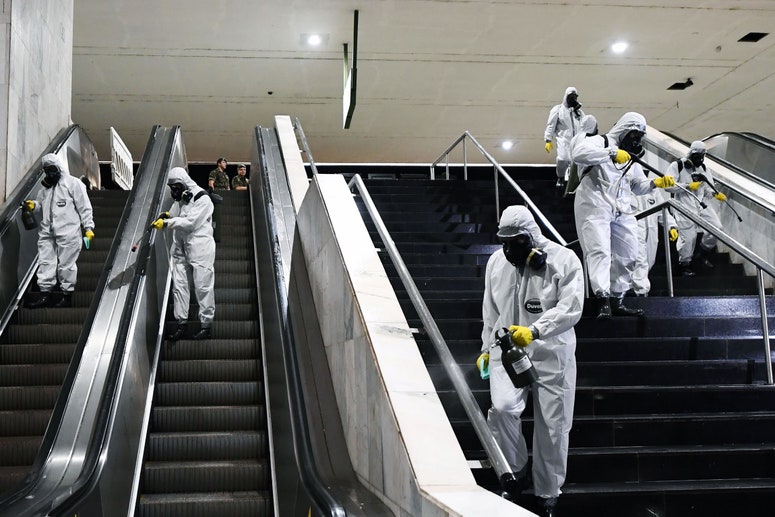“It all crystallized for me when we were seeing ventilators in Italy fail, and a [startup group] was 3D-printing valves for them,” Wiens says. “And we started thinking: OK, if ventilators are being used more than normal, they might fail more than normal, and the biomed technicians are going to be on the front lines alongside everyone else.”
On March 18, Wiens put out a call to fixers, medical professionals, and biomedical technicians. He asked them to submit model numbers for critical equipment like ventilators, BiPAP machines, and anesthesia machines, as well as fallibility estimates and ideas for what parts might need to be replaced. Essentially, he wanted to crowdsource one of the biggest databases ever for medical device repair information.
Wiens’ efforts were not unprecedented. For several years now, a biomedical engineer in Tanzania named Frank Weithoner has maintained a website for medical device repair manuals, called Frank’s Hospital Workshop. But that website was created to support his colleagues in developing countries, Weithoner said in an email to WIRED. It hosts about 4,5000 device manuals. In some cases, file downloads have been prohibited by device makers. Frank is also just one guy. Wiens wanted to go bigger.
“There are these apocryphal hard drives floating around the biomed community, filled with PDFs that they’ve collected over the years,” Wiens says. “And they’re only as good at doing their job as that folder filled with PDFs is.”
Files started flooding into iFixit, with one particular folder containing as many as 50,000 files. Two weeks into the project, iFixit was overwhelmed. The company reached out to researchers at The Maintainers and the American Library Association and solicited volunteers. After two months of work, and with the help of more than 200 archivists and librarians, iFixit launched its searchable collection. The database was deduplicated and consolidated, and it contains more than 13,000 files—repair instruction manuals for everything from ventilators to ultrasound machines to X-ray equipment to anesthesia systems. Wiens says most of the files were shared with iFixit anonymously, but that he believes they were acquired legitimately and that hosting them is legal under the US Copyright Act.
Of course, Covid-19 has exposed not only our biological vulnerabilities, but our structural, society, and political shortcomings as well. Producing, procuring, and distributing all kinds of medical equipment is a complicated labyrinth outside of a pandemic; within the context of a global pandemic, every move or maneuver has the potential for more dire consequences.
The US medical device industry, the largest in the world, is also a multi-billion dollar business and a highly regulated industry, one that is protective of its proprietary equipment. That means repairing a medical device isn’t always a simple process of asking a biomedical technician to do a quick fix during surgery, or to run the device down to the lab in the hospital’s basement to replace a part. It requires navigating each device’s specific requirements for repair, a process that can take days.
Weins tends to position iFixit as a renegade outfit that distances itself from the broader device industry and its trade groups, and has said that preventing access to this kind of information is “particularly morally fraught during a pandemic.” Many biomedical technicians agree. And in April, five US state treasurers penned a letter to ventilator manufacturers asking them to make their repair manuals more accessible.
“It’s not that it could mean life or death—it’s definitely life or death, especially during a pandemic,” Hammoud from John Muir Health said during a virtual briefing on Monday. “I had situations in the past, before Covid-19, where we had to come into the hospital in the middle of the night and try to pull parts from different devices, different sources, because a patient was waiting on a device. We’ve had to do this multiple times throughout my career.” Hammoud recalled an instance where he sought out a replacement part that would typically cost around $80, only to be told by the original device manufacturer that the manufacturer would have to come in and fix the device at a cost of around $4,000.

